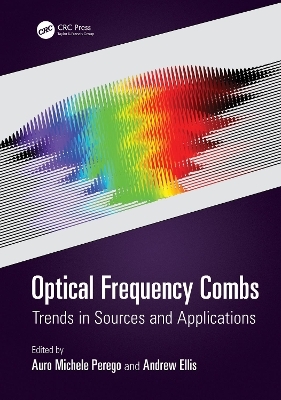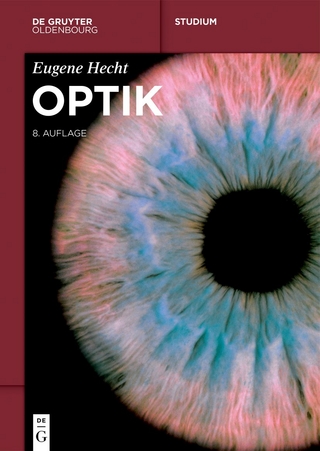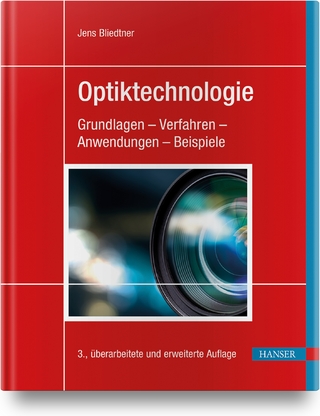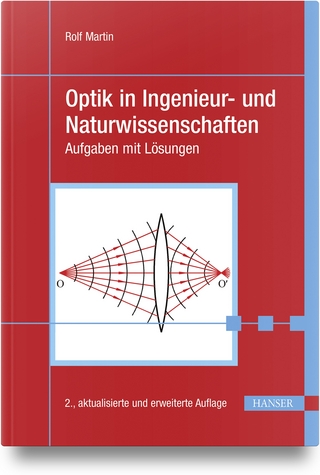
Optical Frequency Combs
CRC Press (Verlag)
978-1-032-54808-1 (ISBN)
- Lieferbar (Termin unbekannt)
- Versandkostenfrei innerhalb Deutschlands
- Auch auf Rechnung
- Verfügbarkeit in der Filiale vor Ort prüfen
- Artikel merken
The book aims at showcasing recent advances through contributions by key players in a multifaceted research ecosystem, and at the same time at providing a valuable service to the community, by offering an as much comprehensive as possible review which, at the same time, highlights challenges to be solved and promising future directions.
The main topics covered include: (i) an overview of different platforms for optical frequency combs generation as fibre lasers, quantum cascade lasers, integrated microresonators and waveguides, fibre resonators, electro-optic modulators and nonlinear fibres, multicore fibres; (ii) a selection of applications in different technologies including sensing, spectroscopy, precision metrology and optical clocks, microscopy, radio-frequency generation, distance ranging, and optical communications; (iii) a diverse range of physical methods for frequency comb generation such as modulation, laser mode-locking techniques, dissipative solitons and parametric gain in nonlinear resonators, nonlinear spectral broadening and supercontinuum formation in waveguides.
This book will be a valuable resource for academics, researchers, and postgraduate students working and interested in the field optical frequency combs, and more broadly in photonic technologies too.
Key Features:
· Edited by authorities in the field, with chapter contributions from subject area leading experts in academia and industry.
· Up-to-date with the latest technological developments, applications, and fundamental research from the field.
· Describes comb properties depending on source and generation platform, and comb specifications matching to application needs.
Auro Michele Perego received a B.Sc. and an M.Sc. in Physics from Università degli Studi dell’Insubria (Como, Italy) and a PhD degree in Electrical Engineering from Aston University (Birmingham, UK) in 2018. He is currently a Royal Academy of Engineering Research Fellow at the Aston Institute of Photonic Technologies, where he leads his independent research group. His main research interests live at the interface between applied physics and photonic engineering and include optical frequency combs, the physics of modelocking and light pulses generation in lasers, parametric amplification, optical sensing, and the study of instabilities and solitons in nonlinear optical systems. Andrew Ellis received the B.Sc. degree in physics with a minor in mathematics from the University of Sussex, Brighton, U.K., in 1987 and his Ph.D. degree from The University of Aston in Birmingham, U.K., in 1997 for his study on all optical networking beyond 10 Gbit/s. He previously worked for British Telecom Research investigating the use of optical amplifiers and advanced modulation formats in optical networks, the Corning Research Centre on optical component characterization and the Tyndall National Institute in Cork, Ireland. He interests include the evolution of core and metro networks. He is now Professor of Optical Communications at Aston University where he is also deputy director of the Institute of Photonics Technologies (AIPT). Prof. Ellis is a Fellow of the Optical Society of America.
Introduction. Chapter 1: Optical frequency combs from supercontinuum generation in integrated photonics. Chapter 2: Integrated lithium niobate optical frequency combs. Chapter 3: Soliton Frequency Combs in Microresonators. Chapter 4: Semiconductor Device based Optical Frequency Comb Generation. Chapter 5: Quantum Cascade Laser frequency combs. Chapter 6: Fibre-based Optical Frequency Combs. Chapter 7: Optical frequency combs in fibre resonators. Chapter 8: All-fibre frequency agile triple-frequency comb light source. Chapter 9: Spectroscopy with electro-optic dual frequency combs. Chapter 10: Optical Frequency Combs in the 2 μm Waveband for Dual Comb Spectroscopy. Chapter 11: Dual-Comb Ranging. Chapter 12: Dual-comb microscopy. Chapter 13: Electro-Optic Sampling-Based Timing and Synchronization with Optical Frequency Combs. Chapter 14: Optical Frequency Combs Applications for Synchronous Transmission. Chapter 15: Integrated optical frequency combs and their applications - An industry perspective. Chapter 16: Optical frequency combs for optical clocks.
| Erscheinungsdatum | 22.11.2024 |
|---|---|
| Zusatzinfo | 4 Tables, black and white; 99 Line drawings, black and white; 69 Halftones, black and white; 168 Illustrations, black and white |
| Verlagsort | London |
| Sprache | englisch |
| Maße | 178 x 254 mm |
| Themenwelt | Naturwissenschaften ► Physik / Astronomie ► Optik |
| Technik ► Elektrotechnik / Energietechnik | |
| Technik ► Umwelttechnik / Biotechnologie | |
| ISBN-10 | 1-032-54808-8 / 1032548088 |
| ISBN-13 | 978-1-032-54808-1 / 9781032548081 |
| Zustand | Neuware |
| Informationen gemäß Produktsicherheitsverordnung (GPSR) | |
| Haben Sie eine Frage zum Produkt? |
aus dem Bereich


